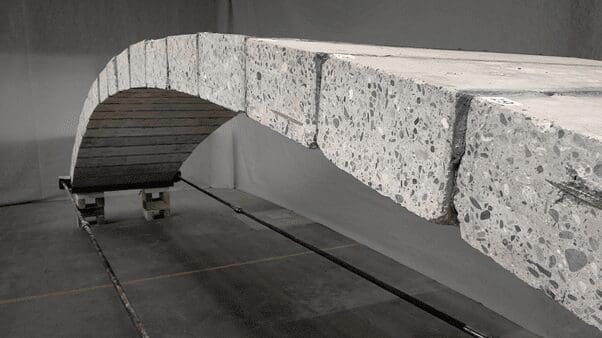
In addition to diverting demolition waste, Recrete introduces a circular economy design strategy that reduces production-related CO₂ emissions to an unprecedented low – far below recycled or shape-optimized concrete alternatives, and even competing with timber-based solutions.
The Structural Exploration Lab (SXL) within the Smart Living Lab has developed Recrete as an innovative approach to reusing concrete blocks from demolition sites, aiming to substantially cut the construction industry’s carbon footprint.
Recrete in Action:
The Footbridge Prototype EPFL researchers applied the Recrete method to build a footbridge prototype using reinforced-concrete blocks salvaged from the walls of a building under renovation. These blocks were cut into individual pieces directly on-site and assembled into a prestressed arch.
This breakthrough marks the first time concrete has been reused in this way, proving the potential of Recrete to transform material reuse practices. By integrating this strategy, the industry can move toward circular construction and significantly lower emissions.
Overcoming Reluctance to Reuse Concrete
Builders are often reluctant to reuse concrete due to perceived risks. The Recrete project directly addresses this concern. The footbridge prototype demonstrates that the process is safe, practical, and highly relevant for modern infrastructure.
According to the SXL team, adopting Recrete offers clear benefits: lower emissions, reduced waste, and conservation of valuable resources. With further adoption, it could become a scalable solution for sustainable construction worldwide.
Conclusion
Concrete blocks from demolished structures no longer need to be discarded. They can be transformed into innovative, durable structures that actively shrink the industry’s carbon footprint.
References:
Design and construction by the Structural Xploration Lab, EPFL
